Pink Radish Container Gardening: Ever dreamed of harvesting vibrant, peppery radishes right from your balcony or patio? I know I have! There’s something incredibly satisfying about growing your own food, even if it’s just a small batch of these crunchy delights. Forget the sprawling garden – with a few simple tricks, you can enjoy a bountiful harvest of pink radishes in containers, no matter how limited your space.
Radishes have been cultivated for centuries, with roots (pun intended!) tracing back to ancient civilizations. They were a staple food in ancient Egypt and Greece, prized for their quick growth and nutritional value. Today, they’re a popular addition to salads, snacks, and even cooked dishes. But why buy them at the store when you can easily grow your own, fresh and bursting with flavor?
In today’s busy world, finding time for a traditional garden can be a challenge. That’s where pink radish container gardening comes in! This DIY guide will equip you with all the knowledge you need to successfully cultivate these peppery gems in pots. I’ll share my favorite tips and tricks for choosing the right containers, soil, and radish varieties, as well as how to care for your plants to ensure a plentiful harvest. Get ready to enjoy the satisfaction of growing your own food and adding a pop of color and flavor to your meals!
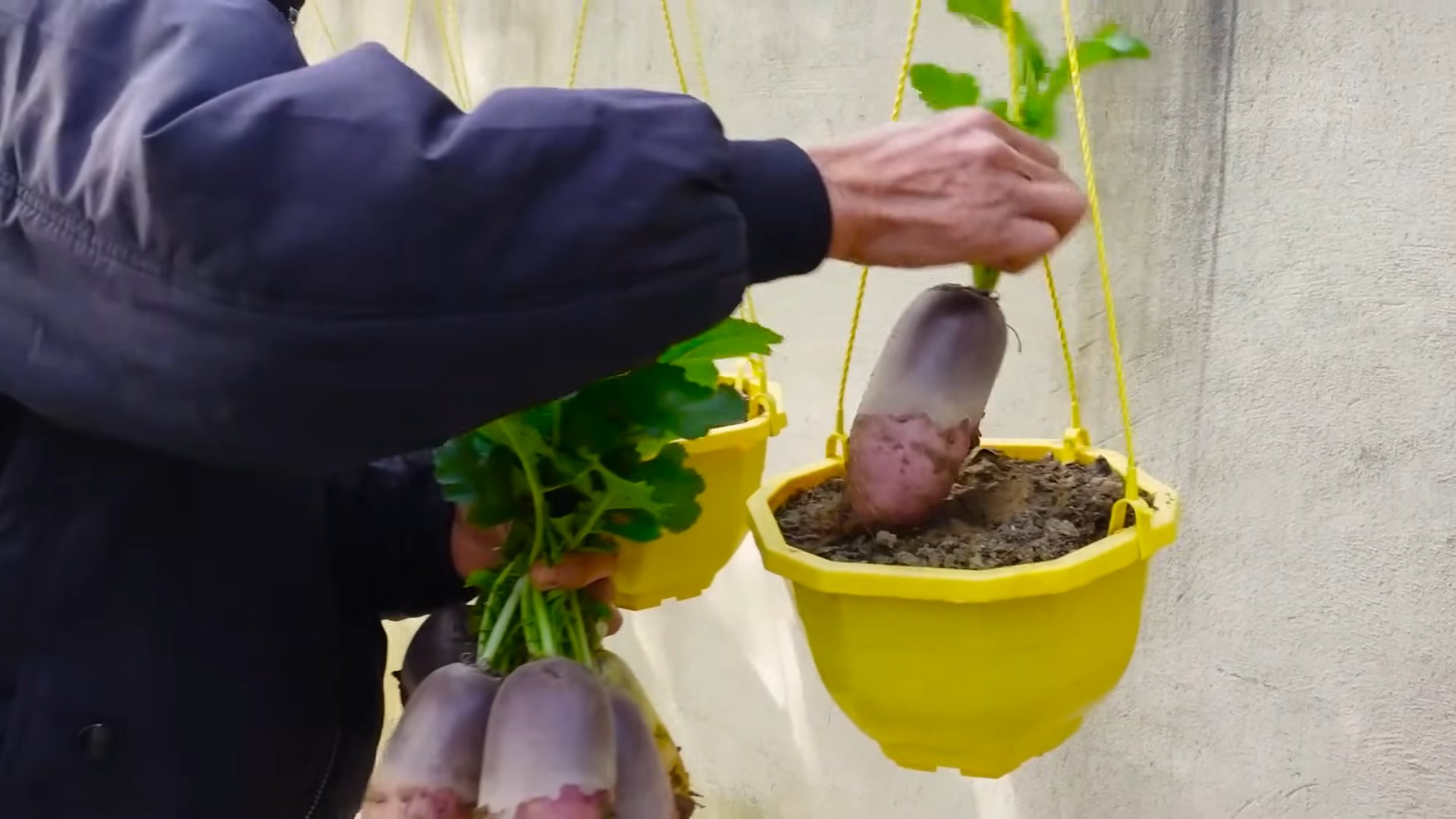
Growing Pink Radishes in Containers: A Beginner’s Guide
Hey there, fellow gardening enthusiasts! Ever thought about growing your own radishes? They’re super easy, quick to harvest, and add a delightful peppery crunch to salads and snacks. Plus, those vibrant pink roots are just plain cheerful! Today, I’m going to walk you through the process of growing pink radishes in containers, even if you’ve never gardened before. Trust me, it’s simpler than you think!
Choosing the Right Container and Soil
First things first, let’s talk about where your radishes will call home.
* Container Size: Radishes don’t need a ton of space, but they do need some depth. A container that’s at least 6 inches deep is ideal. I usually opt for something around 8-10 inches just to give them a little extra wiggle room. The width will depend on how many radishes you want to grow. A container that’s 12 inches in diameter can comfortably house about 10-12 radish plants.
* Drainage: This is crucial! Radishes hate soggy feet. Make sure your container has drainage holes at the bottom. If it doesn’t, you can easily drill some in.
* Material: Plastic, terracotta, ceramic – it’s all good! Just keep in mind that terracotta pots tend to dry out faster, so you might need to water more frequently.
* Soil: Radishes thrive in loose, well-draining soil. I recommend using a good quality potting mix. Avoid using garden soil directly in containers, as it can become compacted and doesn’t drain as well. You can also amend your potting mix with compost for added nutrients.
Planting Your Radish Seeds
Now for the fun part – planting!
1. Prepare the Soil: Fill your container with potting mix, leaving about an inch of space at the top. Gently pat the soil down to remove any large air pockets.
2. Sow the Seeds: Radish seeds are tiny, so handle them with care. Sprinkle the seeds evenly over the surface of the soil, spacing them about an inch apart. You can also create shallow furrows (about ½ inch deep) and sow the seeds in the furrows.
3. Cover the Seeds: Lightly cover the seeds with a thin layer of soil.
4. Water Gently: Use a watering can with a gentle rose attachment or a spray bottle to water the soil thoroughly. You want the soil to be moist but not waterlogged.
5. Label Your Container: Don’t forget to label your container with the date you planted the seeds and the type of radish you’re growing. This will help you keep track of your progress.
Caring for Your Radish Plants
Radishes are relatively low-maintenance, but they do need a little TLC.
1. Watering: Keep the soil consistently moist, but avoid overwatering. Radishes need regular watering to develop properly. Check the soil moisture daily, especially during hot weather. If the top inch of soil feels dry, it’s time to water.
2. Sunlight: Radishes need at least 6 hours of sunlight per day. Place your container in a sunny location, such as a balcony, patio, or windowsill. If you don’t have enough sunlight, you can supplement with grow lights.
3. Thinning: Once your radish seedlings emerge (usually within a few days), you’ll need to thin them out. This means removing some of the seedlings to give the remaining plants enough space to grow. Thin the seedlings so that they are about 2 inches apart. Don’t just toss the thinned seedlings! You can eat the tiny radish greens in salads.
4. Fertilizing: Radishes don’t need a lot of fertilizer, but a light feeding can help them grow faster. You can use a balanced liquid fertilizer diluted to half strength. Apply the fertilizer every two weeks.
5. Weed Control: Keep an eye out for weeds and remove them promptly. Weeds can compete with your radishes for nutrients and water.
Harvesting Your Radishes
The best part! Radishes are incredibly fast growers.
1. Timing: Most radish varieties are ready to harvest in about 3-4 weeks. Check the seed packet for the specific maturity date of your radish variety.
2. Signs of Maturity: The radish roots should be about 1 inch in diameter. You can gently brush away some of the soil around the base of the plant to check the size of the root.
3. Harvesting Technique: To harvest, gently pull the radish from the soil. If the soil is dry, you may need to loosen it with a trowel first.
4. Succession Planting: To enjoy a continuous harvest of radishes, sow a new batch of seeds every 1-2 weeks. This is called succession planting.
Troubleshooting Common Problems
Even with the best care, you might encounter a few challenges. Here are some common problems and how to fix them:
* Bolting: Bolting is when the radish plants start to flower prematurely. This can happen if the weather is too hot or if the plants are stressed. To prevent bolting, keep the soil consistently moist and provide shade during the hottest part of the day. If your radishes do bolt, the roots will become tough and bitter.
* Splitting: Splitting is when the radish roots crack or split open. This can happen if the soil is too dry or if the plants are watered inconsistently. To prevent splitting, water your radishes regularly and evenly.
* Pests: Radishes are relatively pest-resistant, but they can be attacked by flea beetles and aphids. Flea beetles are tiny jumping insects that chew small holes in the leaves. Aphids are small, soft-bodied insects that suck the sap from the plants. To control flea beetles, you can use row covers or insecticidal soap. To control aphids, you can spray the plants with a strong stream of water or use insecticidal soap.
* Diseases: Radishes are susceptible to a few fungal diseases, such as damping-off and white rust. Damping-off is a fungal disease that affects seedlings, causing them to rot and die. White rust is a fungal disease that causes white pustules to form on the leaves. To prevent damping-off, use sterile potting mix and avoid overwatering. To prevent white rust, provide good air circulation and avoid overhead watering.
Choosing Your Radish Variety
While this guide focuses on pink radishes, there’s a whole world of radish varieties out there! Experiment and find your favorites.
* Cherry Belle: A classic, round, bright red radish with a mild flavor.
* French Breakfast: An elongated radish with a red top and white bottom, known for its crisp texture and mild, slightly sweet flavor.
* Easter Egg: A mix of radishes in various colors, including red, pink, purple, and white.
* Black Spanish: A large, round, black radish with a pungent flavor.
* Watermelon Radish: A large, round radish with a green exterior and a bright pink interior, resembling a watermelon.
Extra Tips for Radish Success
Here are a few extra tips to help you grow the best radishes ever:
* Rotate Your Crops: Don’t plant radishes in the same spot year after year. Rotate your crops to prevent soilborne diseases and pests.
* Companion Planting: Plant radishes with other vegetables, such as carrots, lettuce, and spinach. Radishes can help deter pests and improve the soil.
* Eat the Greens: Don’t throw away the radish greens! They’re edible and nutritious. You can add them to salads, soups, or stir-fries.
* Store Your Radishes Properly: To store radishes, remove the greens and store the roots in a plastic bag in the refrigerator. They will keep for about a week.
Enjoying Your Homegrown Radishes
Now that you’ve harvested your radishes, it’s time to enjoy them! Here are a few ideas:
* Salads: Slice or dice radishes and add them to salads for a peppery crunch.
* Snacks: Eat radishes raw with a sprinkle of salt or a dip in hummus.
* Sandwiches: Add sliced radishes to sandwiches for a bit of zing.
* Pickled Radishes: Pickle your radishes for a tangy and flavorful treat.
* Roasted Radishes: Roast radishes with other vegetables for a sweet and savory side dish.
Growing radishes in containers is a rewarding and easy way to enjoy fresh, homegrown vegetables. With a little bit of care and attention, you can have a bountiful harvest of delicious radishes in just a few weeks. So, grab some seeds, get your hands dirty, and start growing! Happy gardening!
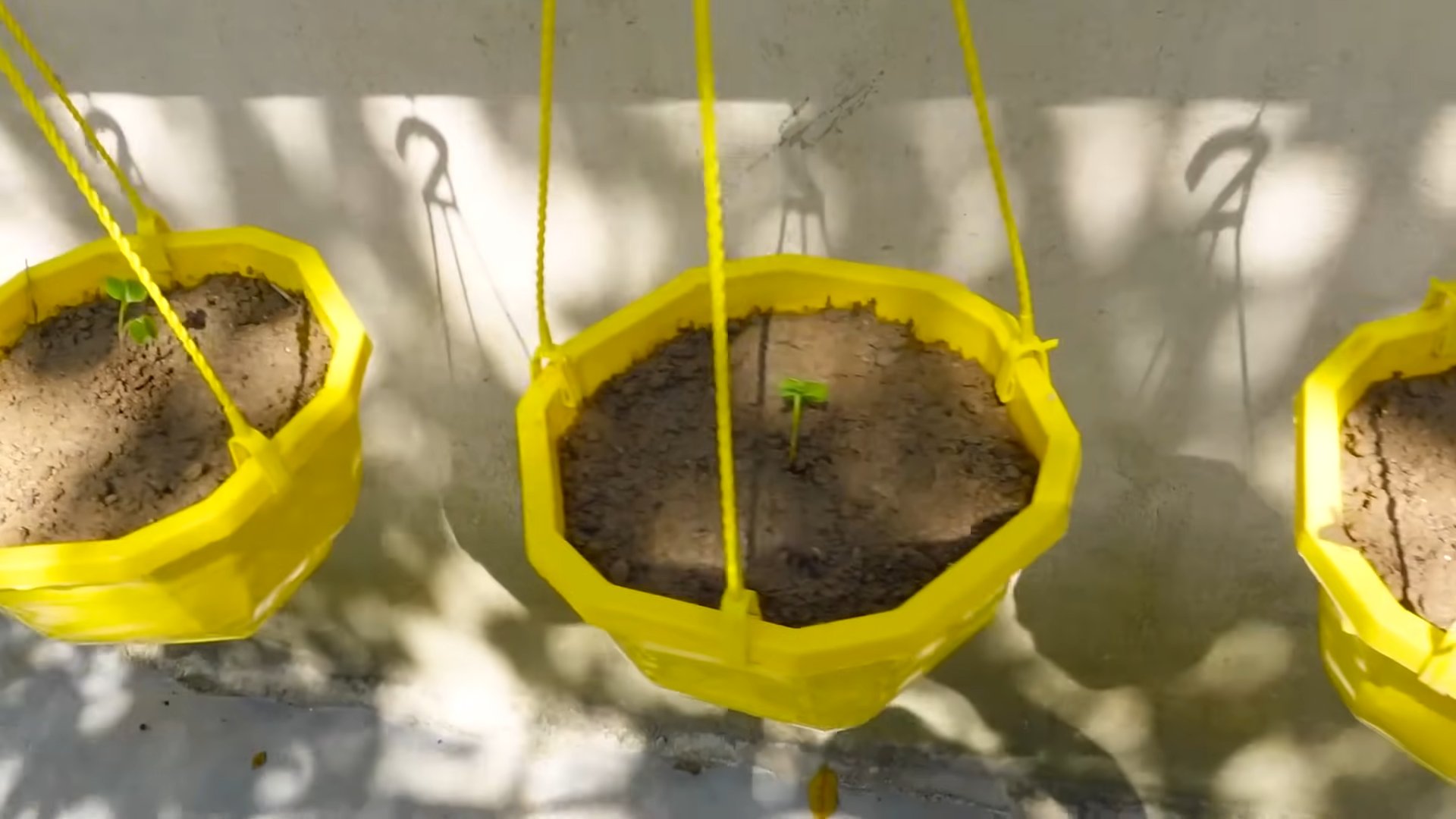
Conclusion
So, there you have it! Growing your own pink radishes in containers is not only surprisingly simple, but also incredibly rewarding. This DIY container gardening trick offers a fantastic way to enjoy fresh, peppery radishes even if you’re short on space or don’t have access to a traditional garden. Forget those bland, store-bought radishes – imagine the vibrant color and crisp flavor of radishes you’ve nurtured yourself, ready to add a zesty kick to your salads, sandwiches, or crudité platters.
This method is a must-try for several reasons. First, it’s incredibly accessible. You don’t need any specialized equipment or a green thumb to succeed. A simple container, some good quality potting mix, radish seeds, and a sunny spot are all you need to get started. Second, it’s fast! Radishes are known for their quick growth, meaning you can expect to harvest your first crop in as little as three to four weeks. This instant gratification makes it a perfect project for beginners and impatient gardeners alike. Third, it’s a great way to control the growing environment. Container gardening allows you to protect your radishes from pests, diseases, and harsh weather conditions, ensuring a healthier and more abundant harvest.
But the best part? The possibilities are endless! Feel free to experiment with different radish varieties. ‘French Breakfast’ radishes offer a milder flavor, while ‘Cherry Belle’ radishes are known for their vibrant red color. You can also try interplanting your radishes with other fast-growing greens like lettuce or spinach to maximize your container space. Consider adding a layer of mulch to help retain moisture and suppress weeds. For a decorative touch, choose a colorful container that complements your outdoor space.
Don’t be afraid to get creative and personalize your container garden to suit your own tastes and preferences. The key is to provide your radishes with the right conditions – plenty of sunlight, well-drained soil, and consistent watering.
We wholeheartedly encourage you to give this DIY pink radish container gardening trick a try. It’s a fun, easy, and rewarding way to enjoy fresh, homegrown produce. And most importantly, it’s a fantastic way to connect with nature and experience the joy of growing your own food.
Once you’ve harvested your first crop of delicious pink radishes, we’d love to hear about your experience! Share your photos, tips, and tricks in the comments below. Let’s build a community of container gardening enthusiasts and inspire others to grow their own food, no matter how small their space may be. Happy gardening!
Frequently Asked Questions (FAQ)
What kind of container should I use for growing radishes?
The ideal container for growing radishes should be at least 6 inches deep and have drainage holes. Radishes don’t have deep root systems, but they need enough space to develop properly. A wider container is better than a narrow one, as it allows you to plant more radishes. You can use plastic pots, terracotta pots, or even repurposed containers like buckets or tubs. Just make sure the container is clean and free of any harmful chemicals. The size of the container will depend on how many radishes you want to grow. A container that is 12 inches in diameter can comfortably accommodate about 10-12 radish plants.
What type of soil is best for growing radishes in containers?
Radishes thrive in well-drained, loose soil that is rich in organic matter. A good quality potting mix specifically formulated for vegetables is ideal. Avoid using garden soil, as it can be too heavy and compact, hindering root development. You can also amend your potting mix with compost or other organic materials to improve its fertility and drainage. A slightly acidic to neutral pH (around 6.0 to 7.0) is optimal for radish growth. Before planting, make sure to remove any large clumps or rocks from the soil to ensure even root growth.
How much sunlight do radishes need?
Radishes need at least 6 hours of direct sunlight per day to grow properly. Choose a sunny location for your container garden, such as a balcony, patio, or windowsill. If you don’t have access to a sunny spot, you can supplement with artificial grow lights. Insufficient sunlight can result in leggy plants with small, underdeveloped roots. Rotate your container regularly to ensure that all sides of the plants receive adequate sunlight.
How often should I water my radishes?
Radishes need consistent moisture to grow quickly and develop crisp, flavorful roots. Water your radishes regularly, especially during hot, dry weather. The soil should be kept consistently moist but not waterlogged. Overwatering can lead to root rot, while underwatering can cause the radishes to become tough and bitter. Check the soil moisture by sticking your finger about an inch into the soil. If it feels dry, it’s time to water. Water deeply, allowing the water to drain out of the drainage holes.
How do I know when my radishes are ready to harvest?
Radishes are typically ready to harvest in 3-4 weeks, depending on the variety and growing conditions. The best way to determine if they are ready is to check their size. Most radish varieties are ready to harvest when the roots are about 1 inch in diameter. You can also gently brush away some of the soil around the base of the plant to get a better look at the root. If the radishes are too small, they will be bland and underdeveloped. If they are too large, they may become tough and pithy. Harvest your radishes promptly once they reach the desired size to ensure the best flavor and texture.
What are some common pests and diseases that affect radishes?
Radishes are generally pest-resistant, but they can be susceptible to certain pests and diseases, such as flea beetles, aphids, and root maggots. Flea beetles can chew small holes in the leaves, while aphids can suck the sap from the plants. Root maggots can tunnel into the roots, causing them to rot. To prevent pest problems, keep your container garden clean and free of weeds. You can also use insecticidal soap or neem oil to control pests. Diseases such as damping-off and root rot can also affect radishes, especially in overly wet conditions. To prevent these diseases, ensure good drainage and avoid overwatering.
Can I grow radishes in the winter?
Yes, you can grow radishes in the winter, especially in mild climates. Radishes are cool-season crops that can tolerate light frost. If you live in a colder climate, you can grow radishes indoors under grow lights. Choose a sunny windowsill or use artificial lights to provide adequate light. Keep the soil consistently moist and protect the plants from drafts. Winter radishes may take a bit longer to mature than those grown in the spring or fall, but you can still enjoy a fresh harvest of homegrown radishes even during the colder months.
Can I eat the radish greens?
Absolutely! Radish greens are edible and nutritious. They have a peppery flavor similar to the roots. You can use radish greens in salads, soups, stir-fries, or as a garnish. They are a good source of vitamins A and C, as well as calcium and iron. Harvest the greens when they are young and tender for the best flavor. Avoid eating greens that are wilted or discolored.
What are some creative ways to use my homegrown radishes?
Besides eating them raw in salads or as a snack, there are many other creative ways to use your homegrown radishes. You can pickle them, roast them, or add them to tacos or sandwiches. Radishes can also be used to make a refreshing radish and cucumber salad. For a spicy kick, try adding them to your homemade salsa. You can even use radish greens to make a pesto or a flavorful side dish. Don’t be afraid to experiment and find new ways to enjoy your delicious homegrown radishes!

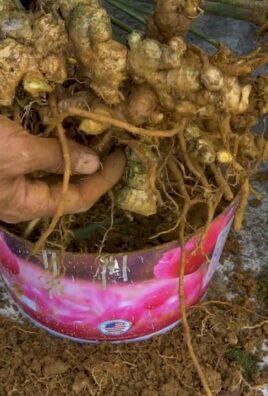
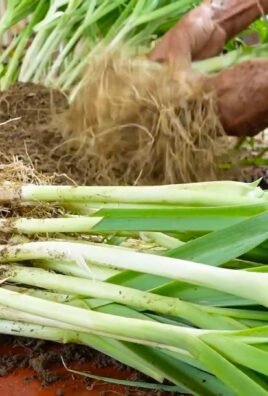
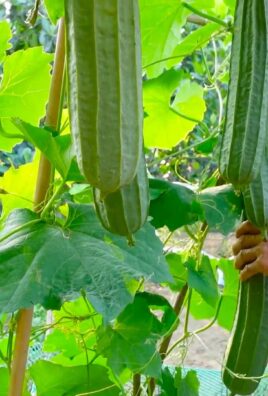
Leave a Comment